(See, I am right, darn it!)
Once again I have been "corrected" by a blog reader who wanted to tell me that the Welcome button on my sidebar is incorrect.
When I first posted this I was corrected because I used the phrase "Ceud Mile Failte". I was told, rather snottily by some people, and nicely by others, that the correct spelling is "Cead." No, I used the spelling "Ceud" deliberately. To clarify things, I changed Gaelic to Scottish Gaelic.
But today, I get a "correction" saying that "Cead Mile Failte" is Irish Gaelic. For heaven's sake, read it correctly : "CEUD MILE FAILTE" - Scottish Gaelic. And yes, I know that it (both Irish and Scottish) means A Hundred Thousand Welcomes, but I shortened it to Welcome.
I suppose, to be ultra correct, I should present it as Ceud Mìle Fàilte, with the accent marks.
To be fair, I have noticed that Cead and Ceud are sometimes used interchangeably. And, when you Google Ceud, you still get 100 times more Cead results than Ceud. However, I am going to be a stickler on this point and continue to use Ceud.
I'm going to prove I'm right by showing a whole bunch of images I found with the word Ceud:
Maybe I should demonstrate the correct spelling of Ceud on my thong. But no one sees my underwear (and they are not thongs anyway). So perhaps I should let my dog advertise it instead:
They get the spelling right at The Country Squire Restaurant in Warsaw, NC (Owner Iris Lennon is of Scottish descent):
And at The Thistle House Bed and Breakfast in Granite Falls, NC:
And at the Texas Scottish Festival and Games:
They have Ceud spelled right on bumper stickers:
And on rubber stamps:
And on cross stitch pictures:
And on a pewter quaich (traditional Scottish drinking cup):
And on commemorative plates:
And on paper napkins:
And on decorative tiles:
You may wonder why I chose to use Ceud over Cead anyway, since I am of both Irish and Scottish descent. For one thing, I feel closer to my Scottish heritage, not having known about my Irish connection until about a half dozen years ago. Second, everyone knows about Irish heritage and symbols - leprechauns, harps, the claddagh, shamrocks and all that.
It seems to me that Scottish Gaelic or Celtic traditions and symbols are less well known. Aside from the ubiquitous bagpipes and tartans, there are several other national symbols of Scotland. For example, see the napkin and tile above, utilizing the thistle.
Do you know why the proud Scots use the thorny, humble thistle as a national symbol? There is a legend which relates how a sleeping party of Scots warriors were almost set upon by an invading band of Vikings and were only saved when one of the attackers trod on a wild thistle with his bare feet. His cries raised the alarm and the roused Scots duly defeated the Danes. In gratitude, the plant became known as the Guardian Thistle and was adopted as the symbol of Scotland.
Sadly, there is no historical evidence to back up the tale. But whatever its origins, the thistle has been an important Scottish symbol for more than 500 years. Perhaps its first recognisable use was on silver coins issued in 1470 during the reign of James III, and from the early 16th century, it was incorporated into the Royal Arms of Scotland.
The members of Scotland's premier Order of Chivalry, The Most Ancient and Noble Order of the Thistle, wear a collar chain whose links are made of golden thistles. The Knights and Ladies of the Thistle also wear a breast star which bears the thistle emblem and a motto which is regularly associated with it, Nemo Me Impune Lacessit - " no one provokes me with impunity".
Scottish Rampant Lion Flag
Another popular symbol of Scotland is the lion. It has been used as a heraldic device for many centuries by Scottish kings. William I of Scotland was known as "The Lion" after he introduced the lion symbol into his coat of arms. The Scottish lion has always been shown on the royal shield as being rampant, i.e. standing erect on the hind legs with the head in profile and forelegs extended.
There is a suggestion that perhaps the Kings of Scotland kept a real lion when in residence at the castles of Stirling and Edinburgh. Both castles have a building within the walls known as "The Lion's Den". This flag is really a flag to be used solely by Scotland's royalty, and so in theory at least its usage should be confined to use on state occasions. However, its image can be seen all over Scotland.
Sometimes the lion and the thistle are used together:
Another long-standing symbol of Scotland is the unicorn. The Royal Coat of Arms of Scotland, used prior to 1603 by the kings of Scotland, incorporated a lion rampant shield supported by two unicorns.
Valued for its associations with chastity, nobility, and freedom, the unicorn was a fierce, proud, and dangerous creature. He contended all those who would see him captured or oppressed, and would rather die fighting than surrender and face imprisonment or slavery. It is no wonder, then, that this creature was such a perfect symbol for the Scots, who for centuries struggled to remain independent and free of foreign influence.
Below, the unicorn is shown with other Scottish symbols: the lion rampant, the thistle and Scotland's national flag, the blue and white St. Andrew's flag, or Saltire.
Valued for its associations with chastity, nobility, and freedom, the unicorn was a fierce, proud, and dangerous creature. He contended all those who would see him captured or oppressed, and would rather die fighting than surrender and face imprisonment or slavery. It is no wonder, then, that this creature was such a perfect symbol for the Scots, who for centuries struggled to remain independent and free of foreign influence.
Below, the unicorn is shown with other Scottish symbols: the lion rampant, the thistle and Scotland's national flag, the blue and white St. Andrew's flag, or Saltire.
Final Note: Please no more harassing me about Cead/Ceud. Remember, although I appear to be a gentle soul, I have the fierceness of the Scottish unicorn and the roar of the Scottish lion in me. Nemo Me Impune Lacessit!






















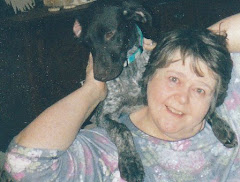



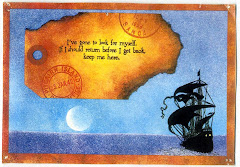














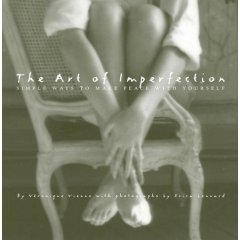


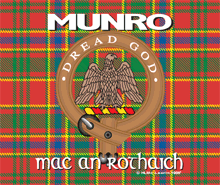
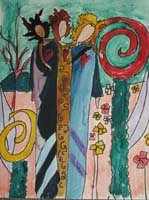

13 comments:
You tell 'em, lass!!
(on a side note, I would love to go to those North Carolina establishments you pictured)
You tell'm. That Vikings stepping on a thistle bit must not have happened in Sutherland. There's an awful lot of blond hair and blue eyes up there. I'm supposedly descended from that bunch and the clan name comes from the Viking word gunnar. I apparently have the Duchess of Sutherland (Highland Clearances) to thank for being born American. Oddly enough, I'm allergic to wool.
Hello! I just want to say I love your page. I enjoy the magic and beauty of your images. I love celebrating my Scottish Ancestry both my own (Lyon) and my husband's (Ferguson). I love all things Celtic though I don't always understand it all such as cead and ceud. I just know celtic things have always been more familiar to me than my life as an American though I can't explain it. I will visit often!
Amber@junkaholicsunanimous
Well - UNceud etc. etc., I say, to all the picky folks. Sheesh, Julie. Everyone's an expert. LOL
Love the story of the thistle and with the lack of evidence for anything, I think it's a great official story for the official flower of Scotland.
I'm Welsh (Himself is Irish) and find the same thing with our language, different spellings and "old" spellings. Then there's regional variations...
There'll always be someone keen to "correct" us LOL
love, love, LOVE this post.
(okay, I'm a fan of your blog - but you knew that)
Thing is - This is YOUR BLOG -
This is YOUR EXPRESSION -
This is YOUR GIFT to Us
(since you've invited us all to visit and enjoy.)
Say & spell as you wish,
and i thank you for every bit -
love & love,
-g-
ps - what's up with 'em anyway?
they have opportunity to create their own blog . . . just sayin'
-g-
My goodness you're thorough! hope I never cross swords with you! As a Scottish descent girlie myself I found the whole thing very interesting and informative and so have learned something new today. Thanks.
its your blog julie- you publish it exactly how YOU want to, its an expression of you and no-one else! Its pedantic of people to say it must be this or it should be that anyway, for goodness sakes, havent they anything better to do?
Leanne, (English, part Irish, very celtic in my heart and completelymy own person too!!)
I've always seen it spelled (and used it in my story) as "Ceud." Personally, I've never seen any other spelling, and I'm addicted to anything Scottish.
I'm sorry some of the grammar police were so rude to you. I guess it takes a whole lot of different personalities to make up a world. :0/
Kristin
It's bad enough when people correct you and they're right but it just ads insult to injury when ignorant people try to correct you when you're right!
You are absolutely right to use "Ceud..."
M. Hayden Sutherland
http://www.waymarking.com/gallery/image.aspx?f=1&guid=dd7a5e34-6d83-434e-9223-2fc60ae35945&gid=3
Victoria Park in Kincardine, Ontario might be a good place to continue the debate for those that wish to continue correcting you. ;)
I like your blog page and It is interesting to learn about ScotsGaelic. I understand your dilemma about the spelling of Ceud as I have the same dilemma about the Welsh word "cwtsh" (meaning cuddle and is too often spelt as cwtch when the letters ch don't make the same sound in Welsh at all). The story of the Lady of the lake is also a Welsh legend as well as being a Scottish legend so it seems. It's interesting how the same legends appear in other cultures too. Irish people have the legend of Tir n'a n'Og about Niamh and Oisin , which is the same story as the Welsh Nia ben Aur about Nia and . It's a small world and observing our similarities is fascinating to me, which is why I enjoyed your page :-)
Ach, lass, dinna fash yersel'! (Maybe correct spelling, mibbe no). It's a'y been ceud, not cead.
Anyone I've met who said differently was either Irish or dyslexic.
Post a Comment